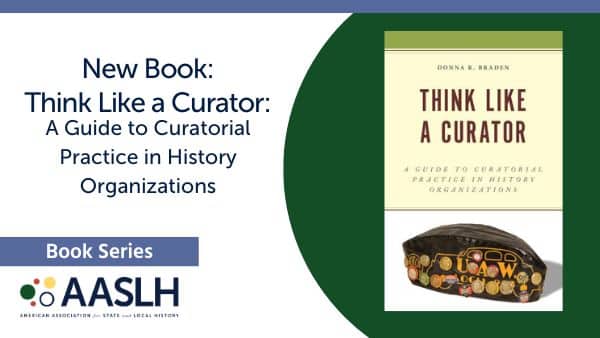Sometimes, people who start out as our visitors become something more: volunteers, collaborators, contractors, the list goes on and on. In 1999, Ken and Ruth Cooper visited us at the Homestead Museum for the first time. Shortly thereafter, they pitched the idea of Ken instructing an introductory watercolor workshop followed by an exhibit of paintings he’d create inspired by the museum. They brought a wonderful portfolio to show us filled with examples of Ken’s work in the U. S. and England. Ruth, a retired teacher and theatre manager, and Ken’s publicist extraordinaire, was a delight to work with. She clearly understood how non-profits worked and had great admiration for them. To this day, we proudly display Ken’s work in our office buildings.

Ken Cooper’s painting of the Walter P. Temple Memorial mausoleum at the Homestead Museum. You never know what kind of talents visitors will bring your way!
Since that first meeting, they have visited the museum close to a dozen times to see what we’ve been up to (they often seek refuge from trying Michigan winters in sunny California). A topic of conversation that always comes up is where they’ve been since we last saw them. These days, their travels take them all over the U. S., and historic sites are always on the list of places to explore. Their perspective, as seasoned museum-goers, may not be that of your “average museum visitor,” but many people who visit our sites fall into this category. They are passionate, they have expectations, they seek things out, and they are advocates for places like ours. Recently, I asked them a few questions about their observations and preferences when visiting historic sites. Their answers focused on two things: people and objects.
What makes or breaks your visit to a historic site?
The guides and staff, absolutely!
What are the most exciting changes you’ve seen in history museums over the years?
More attention to detail and better visitor facilities. Ken adds that he prefers the eclectic approach where all that was there over the years remains there. He also doesn’t like that objects are removed and replaced with written commentary. He says he can learn more from the objects than something more to read and that he does his reading about the place before or after he goes there.
What’s your biggest pet peeve when it comes to visiting a museum?
Guides who stick to their “canned” program/information, are inflexible, and aren’t excited about the place and being a guide there.
Do you prefer self-guided or guided experiences when visiting historic sites? Please explain.
We greatly prefer self-guided tours (because of the aforementioned inflexible guides). And our favorite tours are at the British National Trust’s historic sites where we guide ourselves through the house, but there are docents in the rooms ready to answer any question we might have—or look it up in the book they have if they don’t know the answer. (Their books, loose-leaf binders which have been laboriously, we’re sure, put together by staff are really detailed with all the information available on the house and its contents and owners.)
Their comments about how interpreters can make or break an experience echo many others I’ve heard and read about. Last year I wrote a blog post inspired by a friend’s comment on Facebook when he said: “Hanging out at Grant Wood’s studio where he painted most of his major works. For the record, volunteer docents really rock when they show passion and demonstrate real knowledge.” This summer, another friend shared how staff at the National Museum of the Mighty Eighth Air Force facilitated an experience that her family would never forget. She thanked staff by name: Mr. Allen, Mr. Jim, and Mr. Roland. People made these experiences great: people who didn’t stick to the norm; people who were flexible; people who were excited to share! There was no canned presentation in either of these cases, but even if a presentation does need to be somewhat “canned,” I think good interpreters can make it look and sound like it was made just for the group they are engaging with at that moment.

Ken and Ruth Cooper at home in Manistee, Michigan, helping out with the annual Victorian Sleighbell Parade.
As for objects—wow—what a conversation there is to be had here! Some people, like Ken, want to see it all. Others are overwhelmed by seeing the whole kit and caboodle and prefer to have some guidance about how to interact with and experience an exhibit. Personally, I think that’s up to an institution to decide. At the Homestead, for example, we’ve recently revamped public tours of our historic houses to feature specific objects that we use to direct the narrative of our story. An 1854 Colt pistol is on permanent display for the first time, not because it’s eye-catching and belonged to a family member connected to our site, but because it is also representative of turmoil in Los Angeles as it struggled to become a major America city on the Western frontier. It’s symbolic of technology’s impact on society, and the object is relevant to issues and concerns that residents of Los Angeles face today. Objects are powerful players in our stories. We, as institutions, need to be clear about the roles we want them to play in the stories we share with visitors, and we need to be able to answer questions about them as best we can. Sometimes that will mean having something like the Trust’s book to consult, or saying “I don’t know, but let’s find out.”
Thanks for sharing your observations, Ken and Ruth. You’re not alone in your thinking, and you’ve given us more to ponder as a field. See you in December!



